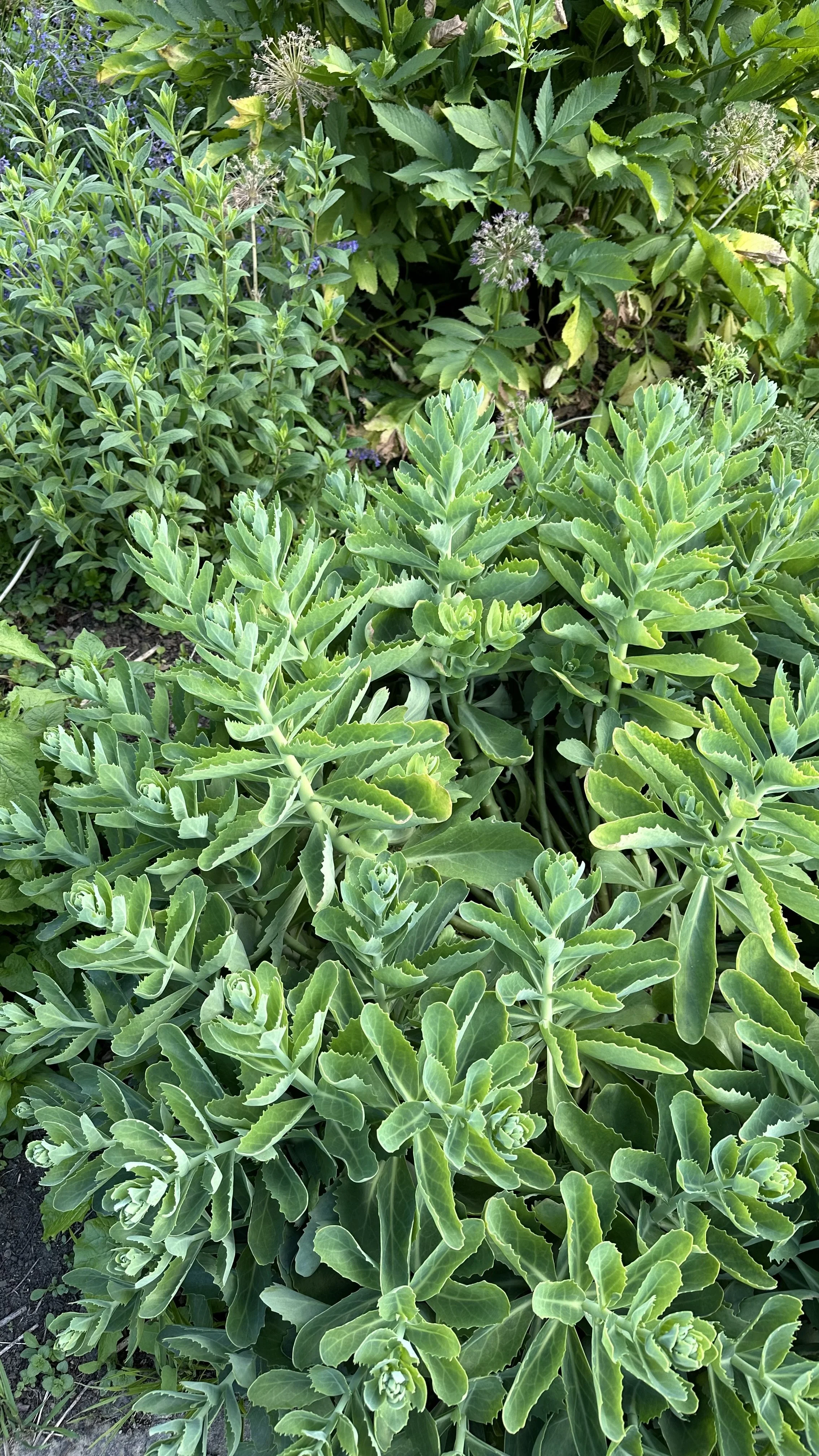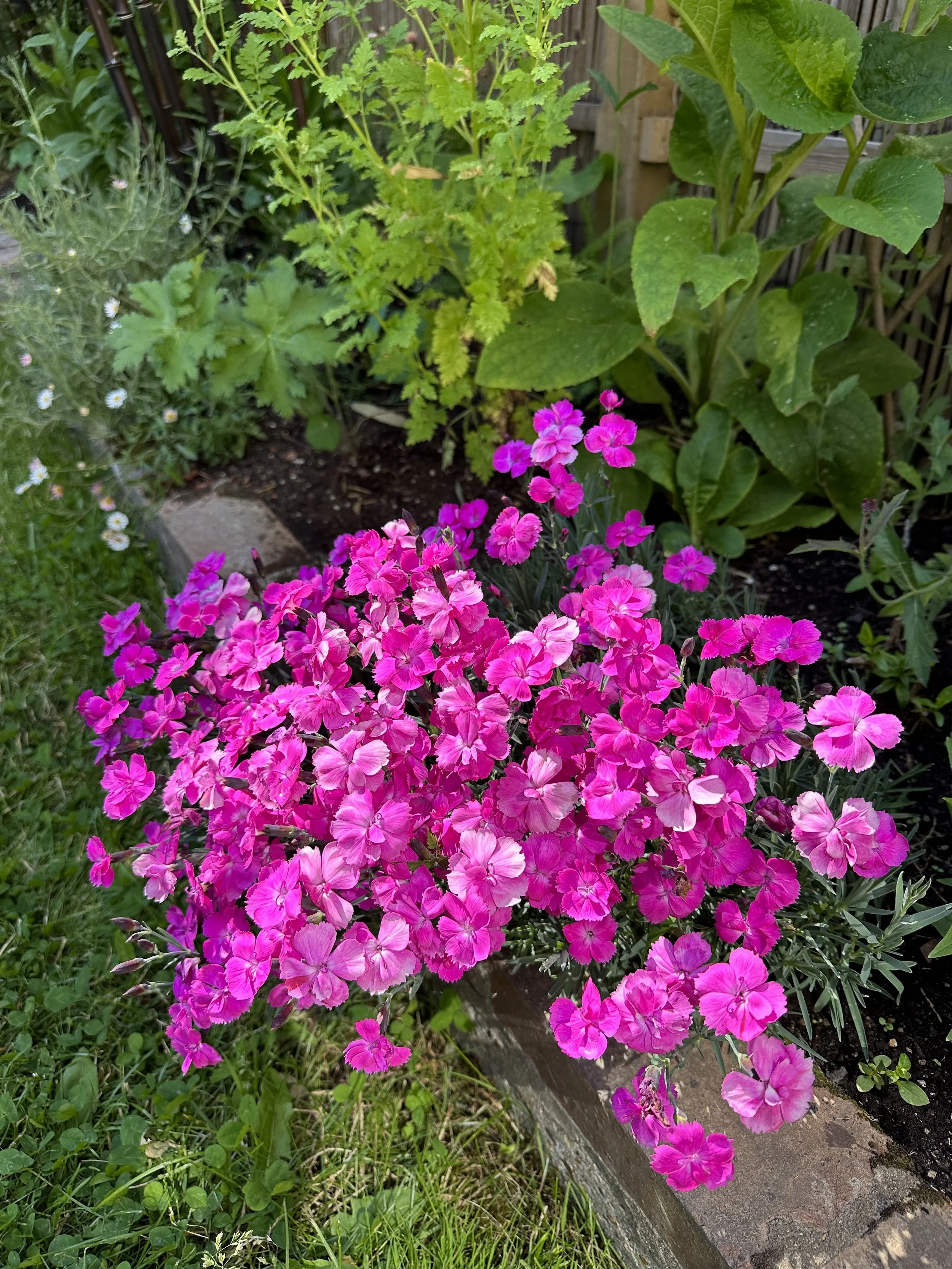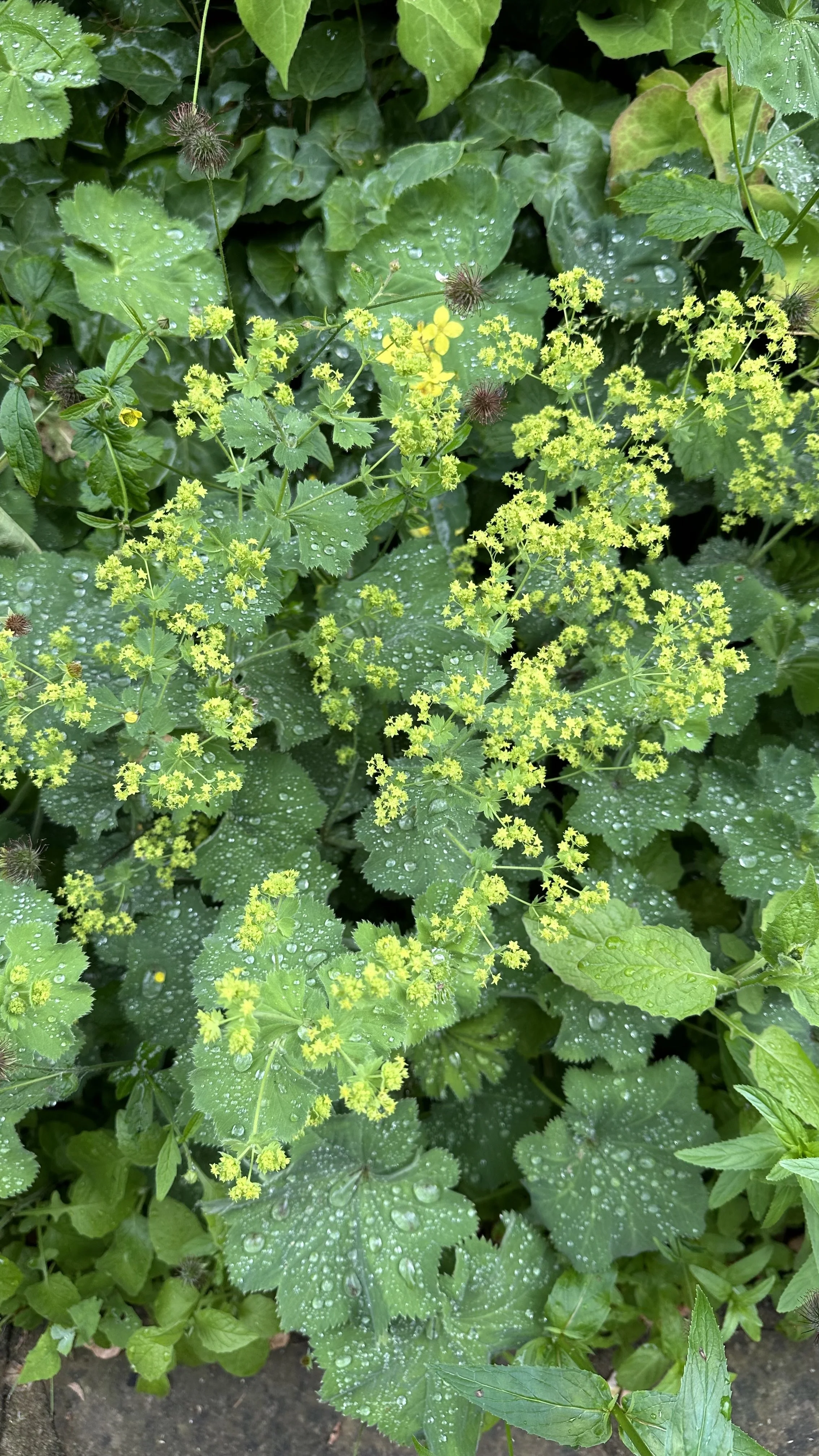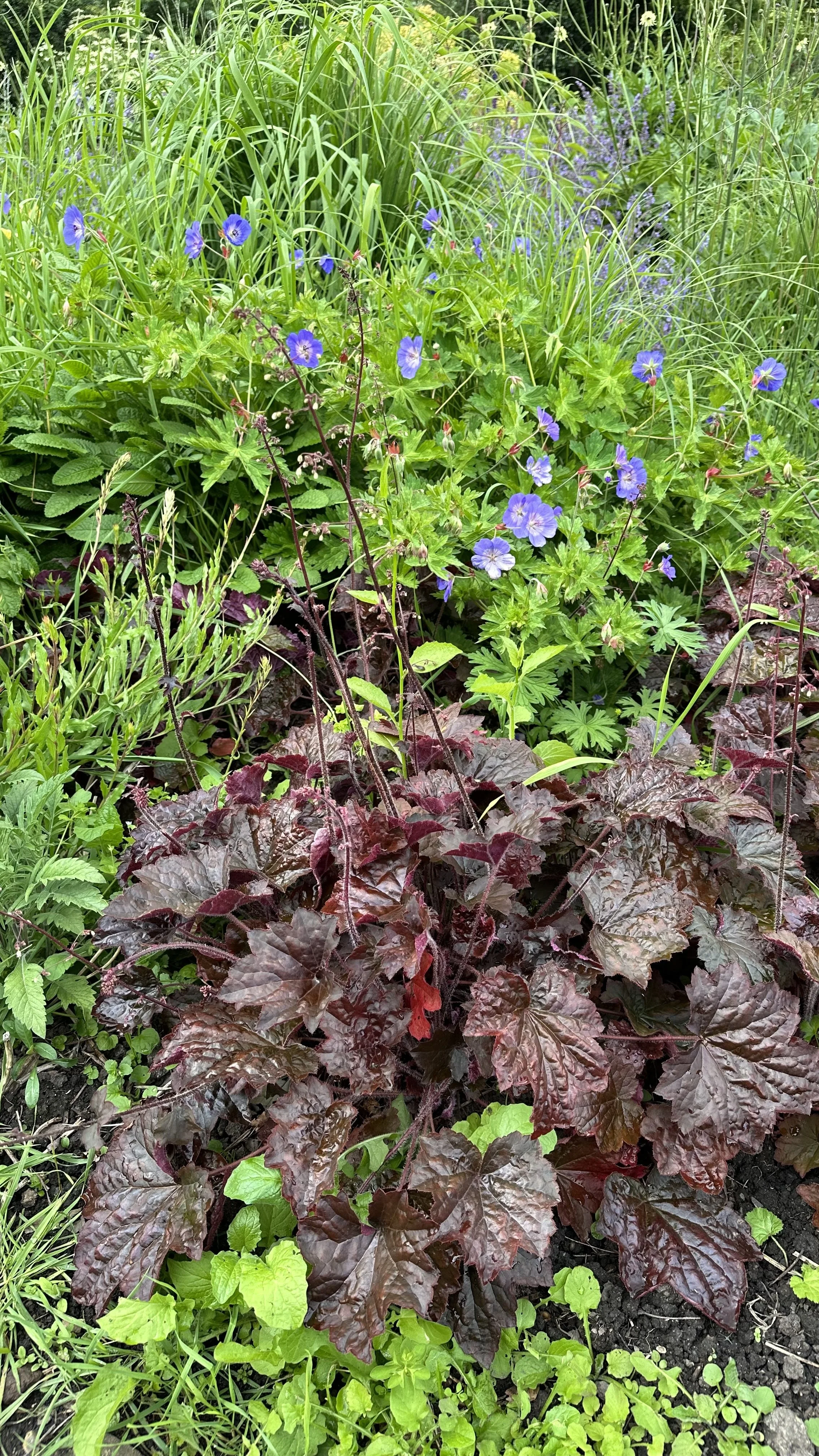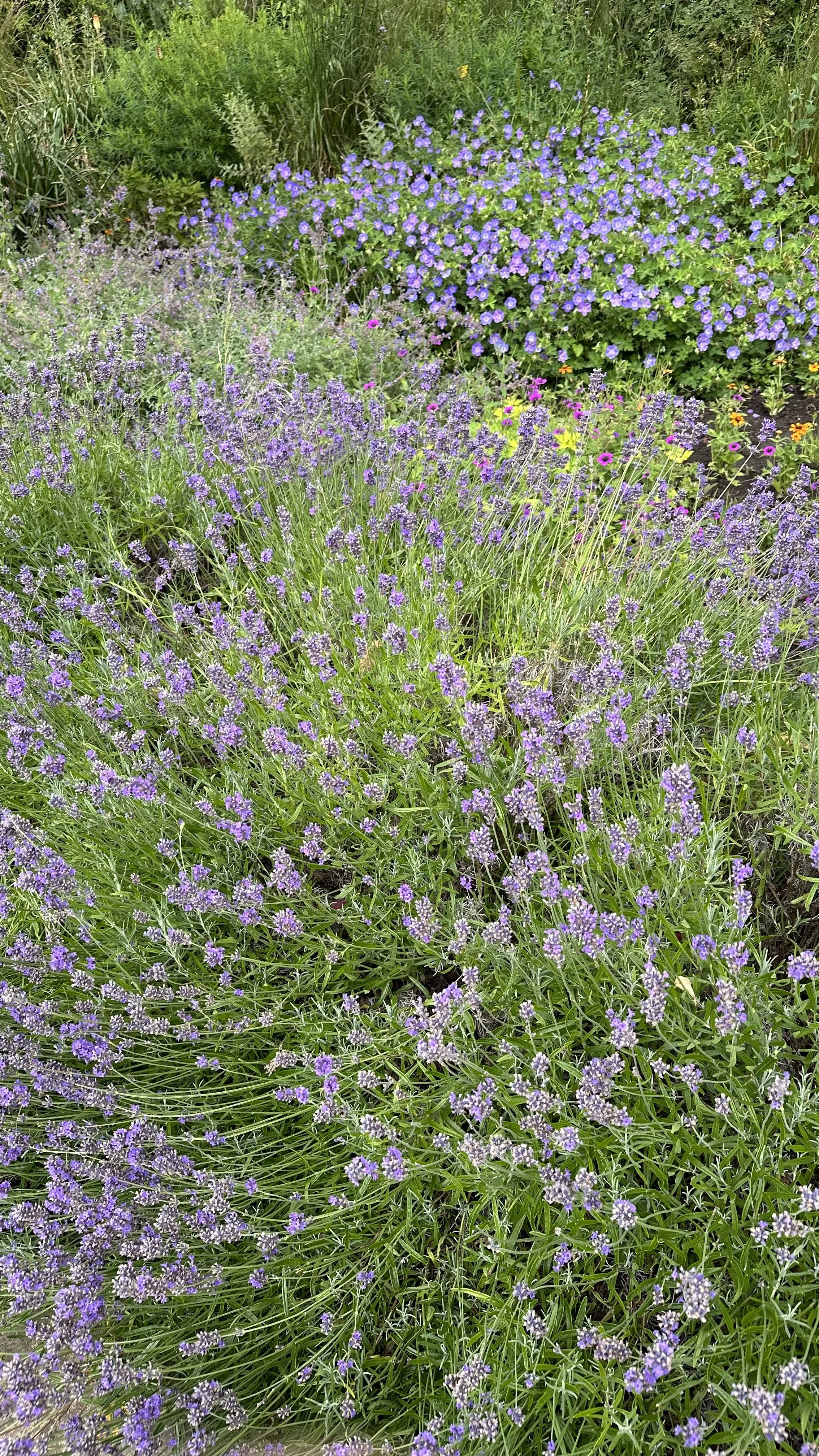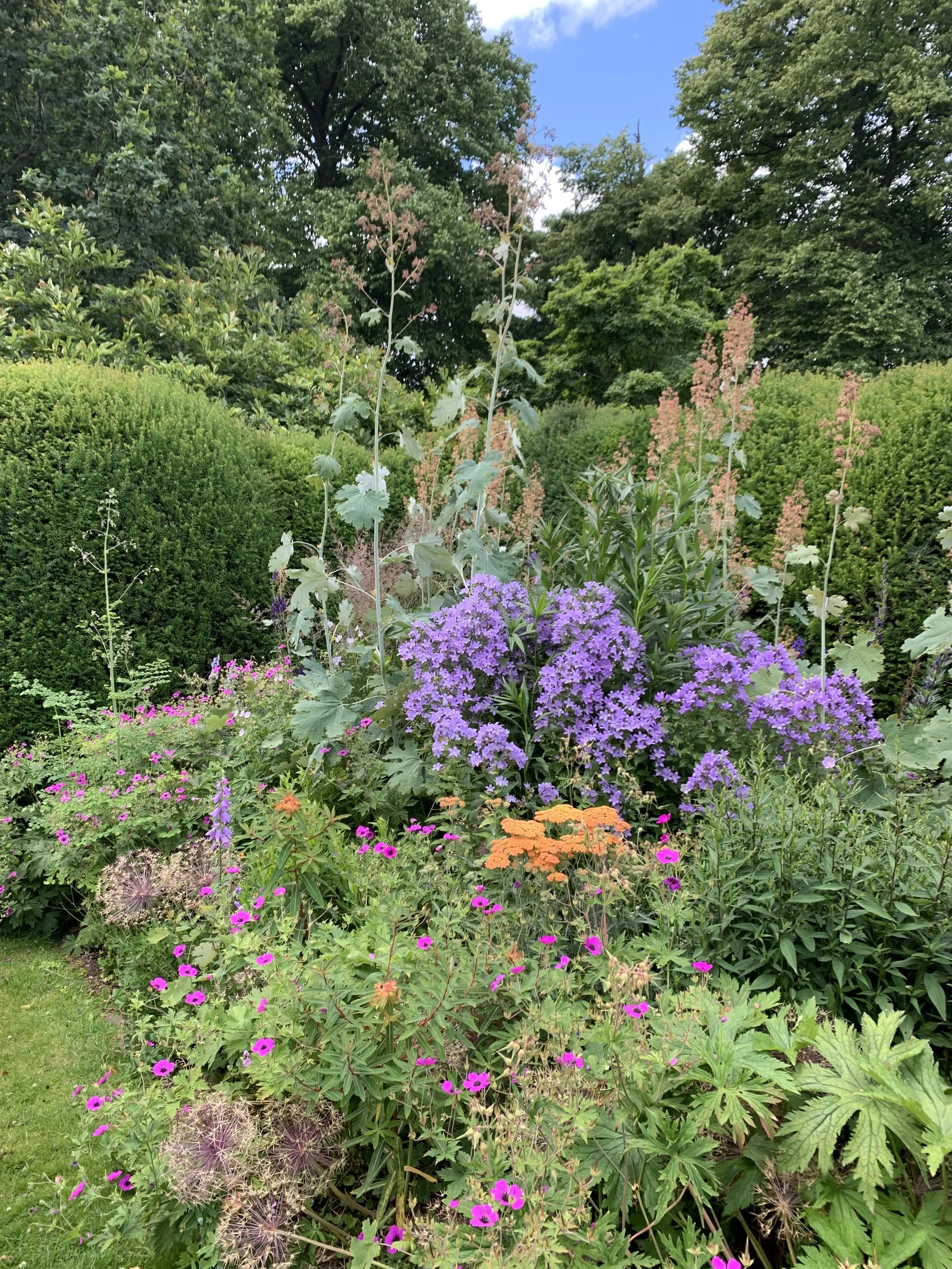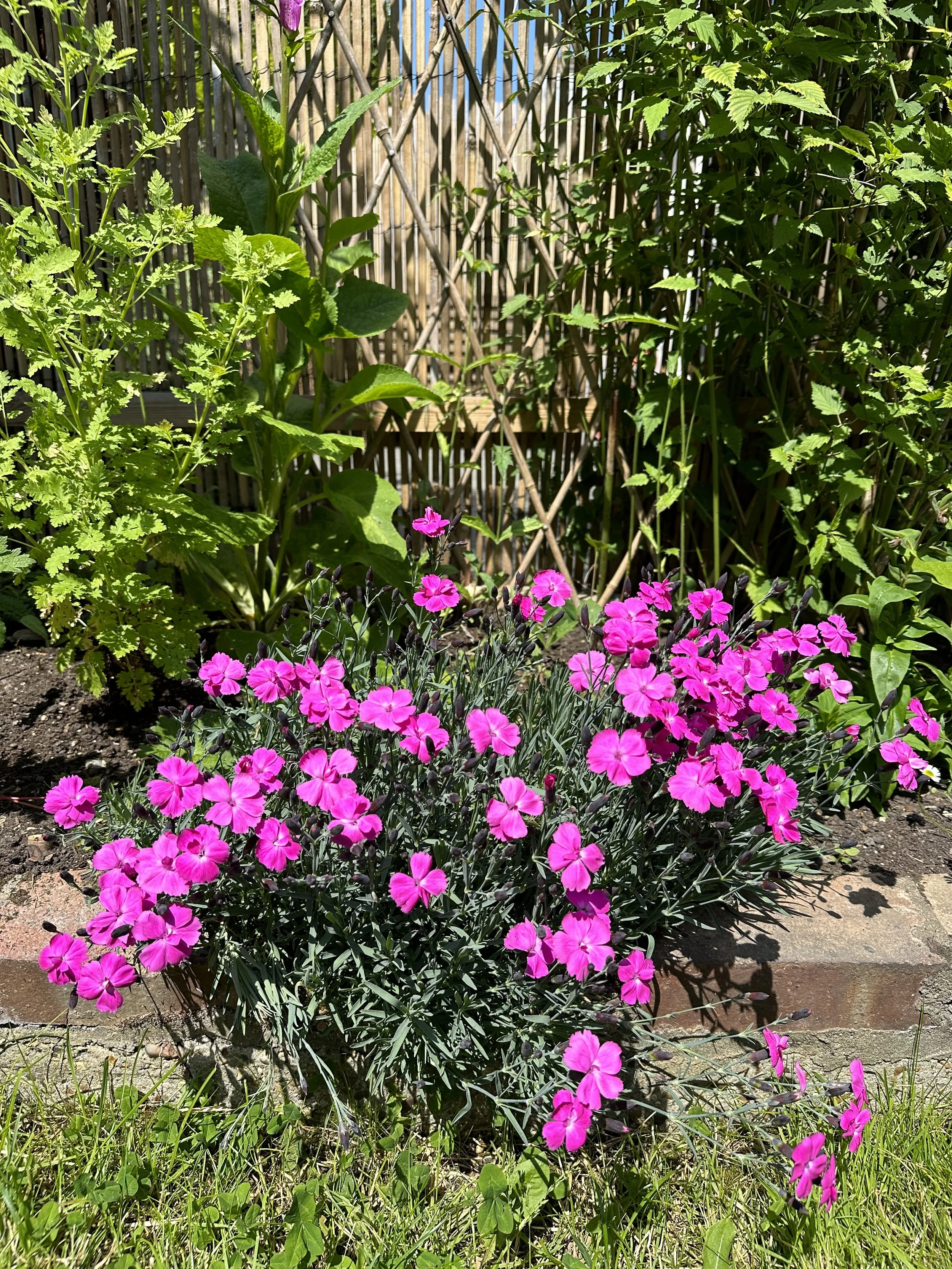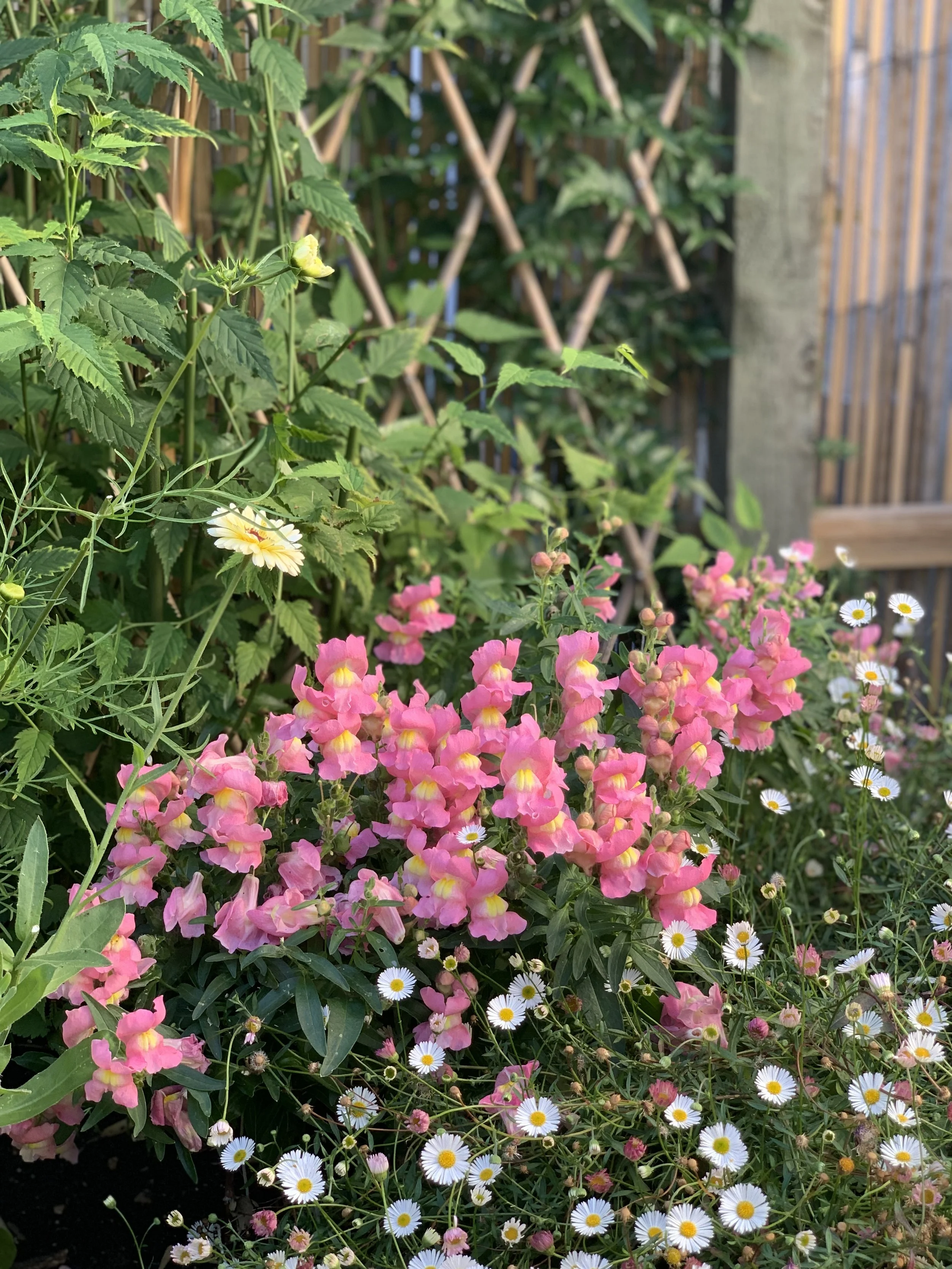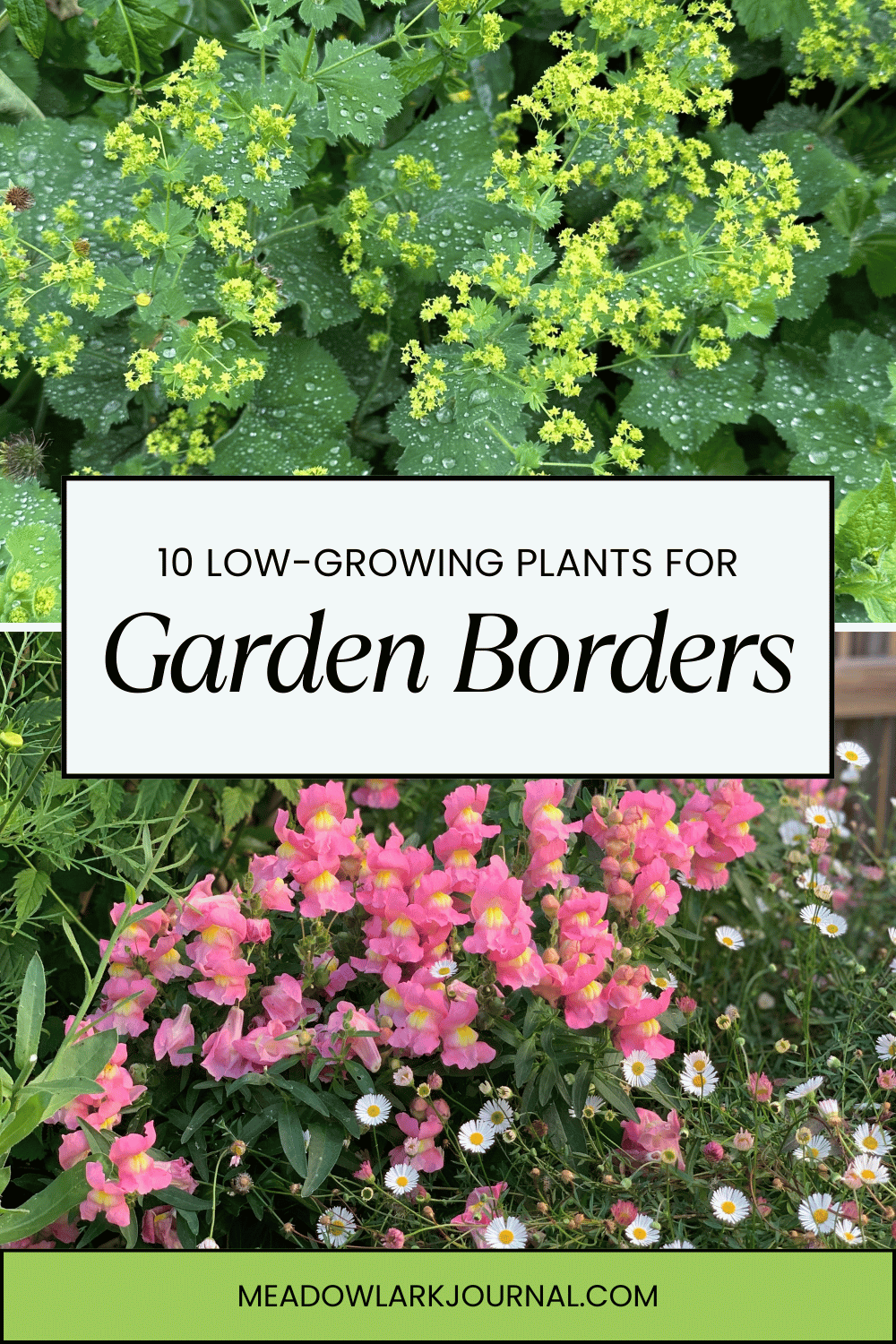Top 10 Low Growing Plants for Garden Borders
This website is reader-supported - thank you! This post may contain affiliate links. As an Amazon Associate, I earn from qualifying purchases at no extra cost to you.
Creating a garden border is an art that marries function and beauty, and the choice of plants plays a pivotal role in this.
Low growing plants are perfect for this task, offering a blend of vibrant colors, textures, and ease of maintenance.
In this guide, we'll explore the allure of these plants for garden borders, highlighting their practical benefits and aesthetic appeal.
From the sun-loving Sedum to the shade-tolerant Heuchera, we'll delve into a variety of species suited for different garden conditions.
Additionally, I'll provide valuable design tips, maintenance advice, and answers to frequently asked questions to help you cultivate a border that enhances the charm of your garden all year round.
This guide is designed to inspire and assist you in creating a stunning, low-maintenance border that will be the envy of your neighborhood.
Also check out my guides:
Erigeron Karvinskianus: Growing Ground Cover for Pollinators
Sedum (stonecrop) is beautiful in garden borders.
Top Low Growing Border Plants
1. Sedum (Stonecrop)
Sunlight:
Full sun to partial shade.
Features:
Sedum varieties display fleshy, succulent leaves that store water, with star-shaped flowers blooming in summer and fall.
They come in an array of colors and forms, from ground-hugging mats to upright specimens.
Benefits:
Exceptionally drought-tolerant, making them ideal for xeriscaping.
They attract butterflies and are perfect for adding visual interest to rock gardens, with some varieties providing autumn and winter interest.
Growing tips:
Easy to care for. Divide every 3-4 years to maintain vigor.
To learn more about growing sedum, check out my guide How to Propagate Sedum.
Here is the sedum I recommend:
2. Thymus serpyllum (Creeping Thyme)
Sunlight:
Full sun.
Features:
Creeping thyme has small, fragrant leaves and produces a carpet of tiny purple flowers.
It releases a pleasant aroma when walked upon.
Benefits:
Extremely resilient to foot traffic, making it a top choice for pathways and between stepping stones.
It's also loved by bees, contributing to pollinator-friendly gardens.
Growing Tips:
Minimal care needed. Trim back after flowering to encourage dense growth.
Here is the Creeping Thyme I recommend:
For more herb inspiration, check out my guides:
3. Geranium sanguineum (Bloody Cranesbill)
Sunlight:
Full sun to partial shade.
Features:
Known for its bright magenta flowers and deeply lobed, attractive foliage, which often turns red in fall.
Benefits:
Geraniums are hardy and versatile, and provides effective ground cover and has a prolonged blooming period from late spring to early summer.
It's also deer-resistant and requires minimal care.
Growing Tips:
Deadhead spent blooms to encourage more flowers. Divide every 3-5 years.
Here is the geranium I recommend:
For more inspiration, check out my guides:
4. Hakonechloa macra (Japanese Forest Grass)
Sunlight:
Partial shade.
Features:
This ornamental grass features arching, cascading foliage in shades of green or variegated stripes. It sways gracefully in the breeze.
Benefits:
Its flowing nature adds a sense of movement and texture to garden borders.
It’s excellent for softening hard edges and pairs well with other perennials.
Growing Tips:
Requires little pruning. Cut back old foliage in early spring.
Here is the Japanese forest grass I recommend:
Dianthus is beautiful at the edge of a border.
5. Dianthus (Pinks)
Sunlight:
Full sun to partial shade.
Features:
Dianthus offers beautifully fragrant flowers in shades of pink, red, and white, above slender stems with blue-green foliage.
They typically bloom in late spring or early summer.
Benefits:
The extended blooming period and sweet fragrance attract butterflies.
They’re ideal for adding vibrant color and are often used in cottage-style gardens.
To learn more about growing dianthus, check out my guide: Pruning Dianthus: Quick, Easy Snips for More Blooms.
Here is the dianthus I recommend:
Also, check out my guide:
6. Nepeta (Catmint)
Sunlight:
Full sun to partial shade.
Features:
Catmint presents spikes of lavender-blue flowers and aromatic, grey-green foliage. It has a sprawling, bushy growth habit.
Benefits:
Known for its long blooming season and ability to attract bees and butterflies.
It’s drought-tolerant once established and makes for an excellent informal border plant.
Growing Tips:
Deadhead to encourage continued blooming. Divide clumps every few years.
Here is the catmint I recommend:
For more inspiration, check out my guide:
7. Stachys byzantina (Lamb's Ear)
Sunlight:
Full sun to partial shade.
Features:
Lamb's Ear is cherished for its unique, velvety, silver-colored foliage and small purple flowers that appear on spikes in the summer.
Benefits:
This plant is drought-tolerant and deer-resistant. Its distinctive texture and color provide excellent contrast and visual interest in borders.
Growing Tips:
Remove flower spikes to enhance foliage growth. Divide clumps to prevent overcrowding.
Here is the Lamb’s Ear I recommend:
Have a shady border? Check out my guide:
Lady’s Mantle is one of my favorites.
8. Alchemilla mollis (Lady's Mantle)
Sunlight:
Full sun to partial shade.
Features:
It features scalloped, fan-shaped leaves that collect dewdrops and chartreuse flowers that appear in airy clusters.
Benefits:
Lady's Mantle is easy to grow and maintain. It’s drought-tolerant once established and works well as edging or for softening garden paths.
Growing Tips:
Cut back after flowering to rejuvenate leaves. Divide every 3-4 years.
Here is the Lady’s Mantle I recommend:
9. Heuchera (Coral Bells)
Sunlight:
Full sun to partial shade.
Features:
Heuchera stands out for its vibrant, evergreen foliage in a wide range of colors and small, bell-shaped flowers on tall spikes.
Benefits:
This plant is perfect for attracting hummingbirds and creating a colorful accent in borders.
It’s versatile and can thrive in a variety of garden settings, even shady gardens.
To learn more about plants for shady gardens, check out my guide The Best Low Maintenance Shade Plants.
Growing Tips:
Divide every 3-4 years. Remove any winter-damaged leaves in spring.
Here is the heuchera I recommend:
Looking for more garden inspiration? Check out my guides:
10. Lavandula (Lavender)
Sunlight:
Full sun.
Features:
Lavender is famed for its fragrant foliage and spikes of purple flowers, offering both visual and aromatic appeal.
Benefits:
Extremely drought-tolerant, it’s a favorite for pollinators and ideal for creating sensory gardens.
Lavender also has many uses in herbal and aromatic products.
To learn more about growing lavender, check out my guides:
Lavender Companion Plants: Enhancing Your Herb Garden
How to Create a Lavender Hedge
Growing Tips:
Prune in early spring or after flowering. Avoid cutting into old wood.
Here is the lavender I recommend:
Why Choose Low Growing Plants for Borders?
Low growing plants are an excellent choice for garden borders for several reasons, each contributing to the overall beauty and functionality of your garden:
Easy Garden Management
Simplicity in Care:
These plants typically require less pruning and upkeep compared to taller varieties.
This simplicity in care makes them ideal if you prefer spending less time on maintenance.
Weed Suppression:
Dense, low growing perennials and ground covers can effectively suppress weeds, reducing the need for frequent weeding.
Enhanced Aesthetic Appeal
Unobstructed Views:
Low growing plants ensure that the view of your garden is not obstructed.
This is particularly beneficial in small gardens where you want to create a sense of space.
Borders as a Backdrop:
Using these plants as borders allows the taller, more dramatic plants in your garden to stand out.
They act as a neutral backdrop, highlighting the beauty of your garden's main attractions.
Versatility in Design
Design Flexibility:
Low growing plants come in a wide variety of textures, colors, and blooming patterns, offering endless design possibilities for your garden borders.
Seasonal Interest:
Many low growing perennials provide year-round interest – from foliage in spring and summer to beautiful blooms and sometimes even winter interest.
Habitat for Wildlife
Attracting Beneficial Insects:
Ground covers and short perennials can attract pollinators and beneficial insects, contributing to the health and vibrancy of your entire garden.
To learn more, check out my guide: Easy to Grow Plants for Bees and Butterflies.
Soil and Erosion Control
Soil Stability:
These plants often help in stabilizing the soil, preventing erosion, especially in sloped areas of the garden.
Moisture Retention:
The foliage of low growing plants can help in retaining soil moisture, reducing the need for frequent watering.
Adaptability
Tolerant to Various Conditions:
Many low-growing varieties are adaptable to a range of soil types and weather conditions.
From drought-tolerant species for sunny areas to moisture-loving plants for shaded spots, there’s a low-growing plant for every border situation.
Choosing low growing plants for your garden borders is not just about aesthetics; it's also about creating a more manageable, ecologically friendly, and versatile garden space.
With the right selection, these plants can significantly enhance the overall beauty of your garden.
Equip your urban green space with my recommend top tier tools.
Design Tips for Garden Borders
Designing a garden border is an art that combines practicality with aesthetics.
Here are some detailed tips to help you create beautiful and functional garden borders:
Play with Colors and Textures
Contrasting Colors:
Use plants with contrasting flower and foliage colors to create a striking visual impact.
For instance, pair deep purple Heuchera with the bright yellow flowers of Alchemilla mollis.
Varied Textures:
Combine plants with different textures.
The soft, fuzzy foliage of Lamb's Ear against the sleek leaves of Sedum creates an interesting tactile contrast.
Consider Plant Heights and Shapes
Layering:
Arrange plants in layers based on their heights – shorter plants in front and taller ones towards the back.
This approach ensures every plant is visible and contributes to the overall design.
Shape Variety:
Mix plants with varying shapes – rounded, spiky, cascading – to add depth and interest.
For instance, the spiky foliage of Lavender contrasts nicely with the round, full blooms of Dianthus.
Seasonal Interest
Year-Round Appeal:
Choose a mix of plants that offer interest in different seasons.
Spring blooming Dianthus, summer-blooming Sedum, and fall-interest plants like Heuchera ensure your border looks great year-round.
Foliage Focus:
Don't just focus on flowers. Plants with colorful or uniquely textured foliage, like Japanese Forest Grass, provide interest even when not in bloom.
Balance and Rhythm
Repetition:
Use repetition of colors, shapes, or specific plants to create a sense of harmony and rhythm in your border.
Repeating groups of Nepeta at intervals can unify the border's design.
Balance:
Achieve visual balance by distributing plants evenly, considering their size and color intensity.
A symmetrical arrangement can create a formal look, while asymmetrical arrangements appear more natural.
Incorporate Non-Plant Elements
Garden Accents:
Consider adding garden elements like rocks, sculptures, or decorative mulch to complement the plants.
Border Edging:
Use physical edgings like stones, bricks, or metal borders to clearly define the garden border and keep it tidy.
Adapt to Your Environment
Right Plant, Right Place:
Choose plants that are well-suited to your garden's conditions – soil type, sunlight, and water availability.
Local Flora:
Incorporate native plants for a garden border that thrives and supports local wildlife.
Maintenance Considerations
Accessibility:
Ensure there's easy access for maintenance tasks like weeding, pruning, and watering.
Low Maintenance Choices:
Opt for drought-tolerant and disease-resistant plants if you prefer a low-maintenance garden.
Creating a Low Maintenance Border
Creating a low maintenance garden border doesn't mean sacrificing beauty or variety.
Here are some key tips to achieve an attractive border that requires minimal effort to maintain:
Choose the Right Plants
Drought Tolerant Varieties:
Opt for plants that can withstand dry conditions, like Sedum or Lavender, to reduce the need for frequent watering.
For more ways to sustainably save water, check out my guide Water Butts: Sustainable Water Storage for Your Garden.
Perennials Over Annuals:
Choose perennials since they don’t require replanting every year.
Plants like Nepeta, Dianthus, and Heuchera come back year after year with minimal intervention.
Native Plants:
Native species are adapted to local conditions and usually require less care than non-natives. They're also better for local wildlife.
Soil Preparation
Good Drainage:
Ensure your border has well-drained soil to prevent root rot and other diseases.
Amend the soil with organic matter to improve its structure and nutrient content.
Mulching:
Apply a layer of mulch around your plants.
Mulch conserves moisture, suppresses weeds, and adds nutrients to the soil as it breaks down.
Check out my guide The Best Alternatives to Traditional Mulch for Your Garden.
Design for Easy Care
Spacing:
Give plants enough space to grow to their full size.
This reduces overcrowding and the need for frequent pruning or dividing.
Grouping Similar Needs:
Group plants with similar water and light requirements together.
This simplifies care and ensures all plants in a section are happy with the same treatment.
Weed Control
Ground Covers:
Use ground-covering plants like Thymus serpyllum (Creeping Thyme) to cover bare soil and suppress weed growth.
Regular Weeding:
Remove weeds regularly before they become established.
Using a weed barrier cloth under mulch can also help minimize weed issues.
Irrigation Strategies
Drip Irrigation:
Consider installing a drip irrigation system for efficient watering.
It delivers water directly to the roots of your plants, reducing water waste and the time spent on watering.
Here is the drip irrigation system I recommend using for garden borders.
Pruning and Deadheading
Low Maintenance Pruning:
Choose plants that require minimal pruning. Many low-growing plants naturally maintain their shape.
Selective Deadheading:
While deadheading can promote more blooms, it can also be skipped for a more natural look and less maintenance.
Pest and Disease Management
Healthy Plant Selection:
Start with healthy plants that are less susceptible to pests and diseases.
Observation:
Regularly check your plants for signs of trouble so you can deal with issues promptly before they spread.
By incorporating these practices into your garden routine, you can enjoy a lush, thriving border with minimal effort.
A low maintenance border is all about smart planning and choosing the right plants and practices for your specific garden conditions.
FAQs
What are the Best Low Growing Plants for Full Sun Borders?
In full sun conditions like a south-facing garden, drought-tolerant plants thrive best.
Some excellent choices include Sedum, which offers a variety of textures and colors, Lavender for its fragrant foliage and flowers, and Thymus serpyllum (Creeping Thyme), known for its hardiness and ability to tolerate foot traffic.
These plants not only survive but flourish in sunny areas, requiring minimal water once established.
Can I Use Low Growing Plants in Shade?
Yes, many low growing plants prefer shaded conditions.
For areas with full to partial shade, such as gardens that are east-facing, consider plants like Heuchera, which has colorful foliage and can brighten up dark spots, or Hakonechloa macra (Japanese Forest Grass) for its graceful, flowing foliage that adds texture.
These plants are ideal for adding interest to shaded areas of your garden where sunlight is limited.
For more shade garden ideas check out my guide The 10 Best Flowering Vines for Shade.
Are There Low Growing Perennials That Flower?
Absolutely! Many low growing perennials produce beautiful blooms.
Dianthus offers fragrant flowers in a range of colors and has a long blooming period.
Geranium sanguineum (Bloody Cranesbill) is another great option, with its vibrant magenta flowers and long blooming season.
These flowering perennials can provide color and interest at the border level.
How Do I Prepare the Soil for Planting Border Plants?
Proper soil preparation is key to the success of your border plants.
Start by removing any weeds and debris. Amend the soil with compost to improve fertility and texture, especially if your soil is heavy clay or sand.
Ensure good drainage, as most border plants prefer soil that isn't waterlogged.
A pH test can also be helpful to determine if any adjustments are needed to suit the specific plants you’ve chosen.
To test the pH of your soil use a pH tester like this one:
How Often Should I Water Border Plants?
The watering frequency for border plants depends on the specific needs of the plants, the soil type, and the weather conditions.
As a general rule, water deeply but infrequently to encourage strong root growth.
Most perennials and low-growing shrubs benefit from about an inch of water per week.
However, drought-tolerant plants like Sedum and Lavender may require less, while plants in shaded or cooler areas may not need as frequent watering.
For more watering tips, check out my guide How to Use Watering Globes.
Wrap-up
The art of designing garden borders with low-growing perennial plants caters to a wide range of needs.
Whether your garden basks in full sun or nestles in full shade, there's a perfect match for every condition.
By considering hardiness zones, you can select plants that are not only beautiful but also resilient in your local climate.
Picture the deep green leaves of Japanese Forest Grass softening the garden edges, or the vibrant pink flowers of Dianthus adding a pop of color.
The key to a thriving garden lies in understanding the needs of your plants and your specific zones.
Ensure you have well-drained soil to keep your perennials healthy, and choose species that align with your garden's light conditions, from the bright sunlight to the more subdued hues of shaded areas.
With this approach, your garden will transform into a harmonious blend of blooms.
Whether you favor the subtle elegance of green leaves or the bold statement of pink flowers, your garden is a canvas, and low-growing perennials are the palette with which you can paint your perfect outdoor sanctuary.
Pin this post to save it for later!
